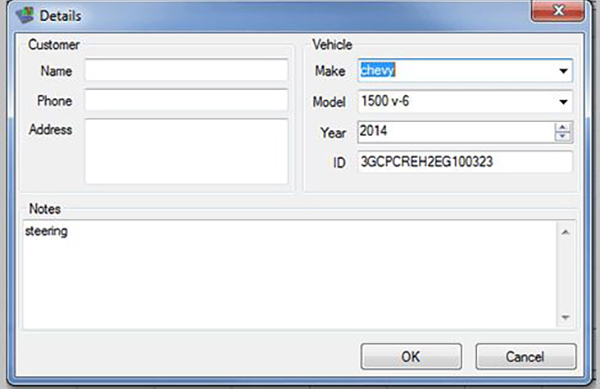Vibration issues are some of the most challenging conditions to accurately diagnose and repair. To help with diagnosis, the CH-51450 Pico Oscilloscope Diagnostic Kit with NVH was released for all U.S. and Canadian dealerships as an essential tool. In addition, there are a number of PI documents and service bulletins in the Service Information that address vibration concerns.
In order to better assist dealerships and help get vehicles repaired right the first time, the GM Technical Assistance Center (TAC) will require any calls regarding vehicle vibration conditions to have a Pico oscilloscope data file sent in prior to calling TAC. The Pico data file will provide insight into the frequency of the vibration and the possible causes. Component vibrations, such as a blower motor, brake pulsation or shudder, do not require a Pico data file.
Vibration Diagnostic Process
Anyone calling TAC without first performing the following process will be given a case number and instructed to call back with the required information.
- Drive the vehicle and record a Pico data file of the vibration condition. Save the file to your computer for possible use later.
- Review the Pico data file and use that information to assist in determining the root cause or component resulting in the vibration.
- Repair the vehicle using the Pico data file information along with any published information relevant to the vibration frequency observed.
- If the repair attempt made the condition better but did not eliminate it, or had no effect at all, and assistance is requested from TAC, record another Pico data file and save it to your computer.
- Compose an e-mail to TAC and, in the subject line, include the text “Vibration,” your BAC, the last eight digits of the VIN, and the TAC Case Number if the TAC case is already established.
- Attach any Pico data files associated with the current vehicle and condition.
- Wait at least an 1/2 hour — allowing time for the e-mail and all information to be received by TAC — before contacting TAC to set up a TAC case.
TAC will not be able to provide any assistance to any calls for a vehicle vibration that do not have an accompanying Pico data file, or if there is any missing information as requested.
Sending a File
To send a Pico data file:
- While viewing the file in the Pico application, select File Save.
- In the Details box, save the vehicle information as well as customer information. Add any related information in the Notes section, such as a sensor location, road surface, etc. (Fig. 22)
 Fig. 22
Fig. 22
- Save the file to a location on your computer where it will be easy to find. The default location will be waveforms. (Fig. 23) It’s not necessary to rename the file, but it is critical to be able to find the location where it was saved.
 Fig. 23
Fig. 23
- Create an email message and include Vibration, your BAC, and the last eight digits of the VIN in the subject line.
- Click the Attach button/icon in the email account and attach the Pico data file. More than one file can be attached to the email if needed. (Fig. 24)
 Fig. 24
Fig. 24
- Add any notes to the email if desired and then select Send to send the information to TAC.
For additional information about the TAC process for vehicle vibration diagnostic assistance, refer to #PIP5601.
– Thanks to Steve Schipansky



















Our pico scope had never been out of the case until 11-12-18 when i had the pleasure of going to the GM Training center in ATL and taking the class on vibrations with Mr Frank he explained the pico scope in a way that made it simple to use. Now it is my go to tool for any abnormal noise or vibration concern it really made diagnosing easier and faster which equals to more money in my pocket!!!! I’m excited about the new test leads and I’m curious as to when an electrical class will be available on the pico scope it should be a big help in diagnosing electrical concerns.